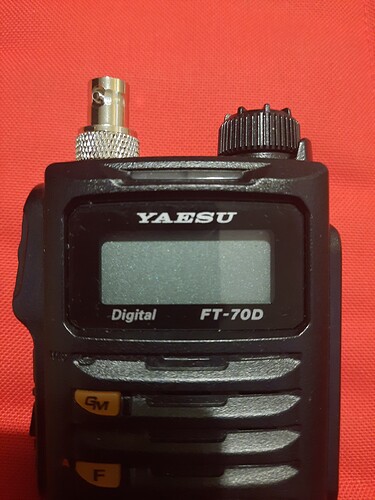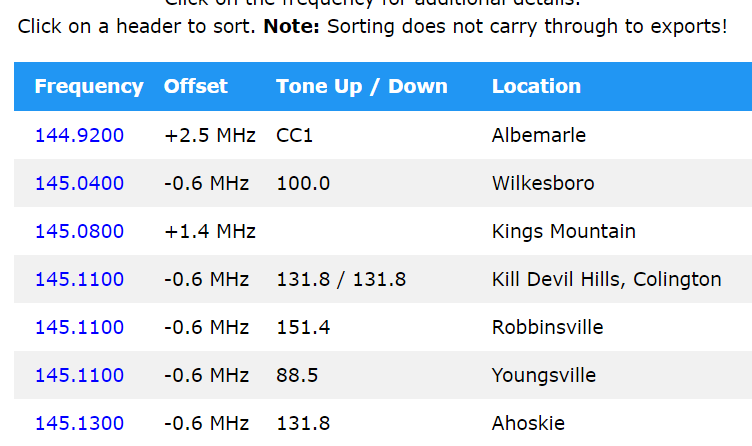Hello Sota friends,
Yesterday I activated a summit in the alpine area for the first time with my Icom ID-51 E handheld radio. So far I had always used my shortwave equipment. The activation with the handheld radio came about because I’m on vacation with my family and actually hadn’t planned to activate a summit. As luck would have it, I made an activation anyway :). To my question, it was very difficult to transmit with the original rubber antenna of the TRX. What screw-on antenna would you recommend for VHF Sota activations? I am looking for an antenna with as much gain as possible on VHF.
Thank you Michael
Hallo Sota Freunde,
ich habe gestern zum ersten mal im Alpinenbereich einen Gipfel mit meinem Handfunkgeräte Icom ID-51 E aktiviert. Bisher hatte ich immer meine Kurzwellenausrüstung genutzt. Die Aktivierung mit dem Handfunkgerät kam zustande, da ich mit meiner Familie im Urlaub bin und eigentlich gar nicht geplant hatte einen Gipfel zu aktivieren. Wie es der Zufall so will habe ich trotzdem eine Aktivierung gemacht:). Zu meiner Frage, es war sehr schwierig mit der Orginalgummiantenne des TRX zu funken. Welche aufschraubbare Antenne könnte ihr für VHF Sota Aktivierungen empfehlen? Ich suche eine Antenne mit möglichst viel Gewinn auf VHF.
VIelen Dank Michael
If I activate with a HH I use the Diamond SRH-999 as this suits my 4 band radio.
I do think it is to delicate to keep on the radio, so I carry it to the summit in a piece of plastic pipe.
Better antenna are available if you do not need 4 bands.
73,
Stuart
If that is true, then you are probably looking for a portable mast with a multi-element directional beam Michael. However, SOTA is usually about compromises. Good results (ie better than the standard rubber duck antenna) can be achieved with variations of the flower pot antenna or slim Jim. These are simple to carry and set up (and therefore complement activations which are shared with non-SOTA walking partners - such as family). I have also used a longer whip antenna (I think it’s the RH770?) with some success. A lot depends on the availability of chasers.
None, they are all too fragile and put too much load on the antenna connector on the radio.
Instead, build yourself a slim jim, lots of online calculators for the length etc, but beware of American designs that are for 146-148MHz. If you build it from “ladder line” feeder then it will roll up and fit in your pack. You will also need a short length of lightweight feeder and an adapter/connector for whatever antenna socket your radio has.
You can hold it up with a small fibreglass travel mast, 3 or 4 metres is all you need.
Servus Michael,
Andy has it correct the RH-770 antenna from different companies (its the same antenna only labelled with the importers name) is a good replacement for the “rubber ducky”. Make sure you order the one with the correct connector as they are available as SMA, reverse SMA and BNC. Check what the ICOM needs. The RH-770 is a dual band 2m/70cm loaded whip that gives gain while not being heavy of too large to pack (it has a telescopic element).
For more gain a beam e.g. Arrow or 2m Moxon will be better but are more difficult to carry. Many 2m SOTA activators have used an RH-770 at some point, or still do.
73 Ed.
I also carry a Chinese RH-770 in my backpack. It works fine on 2m, but is completely out of band on 70cm, maybe I was unlucky getting a bad one.
And as said above, it is a very delicate antenna, handle with care …
I have a flexible quarterwave on my FT1D all the time. The portable sits in a side pocket of my backpack (in it’s own padded bag), antenna fixed to the top of the backpack with a velcro strap. It sends APRS when I’m walking.
Search the usual shops for “Nagoya NA-771 Sma Male”.
This one is just an example, you may find it cheaper.
Results are a whole lot better than with the standard rubber duck, and a bit less than with the RH-770.
73,
Luc ON7DQ
Hi Luc,
a small correction, I believe the point being made was that the connector on the top of HTs can be fragile, rather than the RH770.
This is a valid point no matter what antenna is being attached, even if it is one that is connected to by a short length of coax - the socket on the top of the HT was designed to be used with the stock “rubber ducky” and attaching anything else needs to be handled with care. The “fulcrum effect” of attaching an (albeit well-performing) longer antenna can be quite great if the antenna gets knocked! I have seen some really enormous “fold-out” VHF antennas on top of some hand-helds that I would never consider safe from a physical strain point of view. The RH-770 is probably as large as I would go on my Wouxon (which has quite a sturdy antenna socket).
73 Ed.
Heres that extralong antenna:
https://www.amazon.de/Bingfu-Faltbare-Tactical-kompatibel-Zwei-Wege-Radio/dp/B086JCW4QH/ref=asc_df_B07TYBX86D/?tag=&linkCode=df0&hvadid=427729554926&hvpos=&hvnetw=g&hvrand=10541806994389579174&hvpone=&hvptwo=&hvqmt=&hvdev=c&hvdvcmdl=&hvlocint=&hvlocphy=1004216&hvtargid=pla-817360024711&th=1&ref=&adgrpid=102366482551
Michael, if you want VHF only, you can try the MFJ-1714. It’s a telescopic half-wave radiator for 145 MHz with BNC-plug. In DL it’s available, e.g. here. I haven’t seen it with SMA-connector though.
73 & gl, Roman
As mentioned above, the RH770 (mine is Twyrdio brand) works great. I have two in use between 3 radios, one in BNC, the other in SMA-Male. I seldom bother with a j-pole for 2m anymore as the RH770 works just as well (my anecdotal experience along with that of K0NR).
Chris
I use a BNC adapter and either a BNC RH770 or Slim G with coax/bnc plug. A lot more robust than the SMA connector on the radio
Thanks for the Great Help Sota Community
I dont think that is an issue as our repeater bands start below 145. No one in the US would buy a 146-148 antenna and I dont think they are made.
Kent K9EZ
I’m talking about making one. The US designs are normally calculated for 146 MHz which makes it too short to use in the UK/Europe. Designs like the Slim-Jim and J-pole are pretty critical about their dimensions.
Two good reasons to spend 10 quid more for the genuine Diamond RH-770 from a trusty amateur radio supplier.
Ahoi
Pom
Here in the US the Diamond version is twice the price if you can even find it. When I look online for Diamond RH-770 the picture is of a completely different antenna. I don’t think the telescopic one is available any longer (don’t see it on Diamond’s webpage).
That said, I’ve not had any issues with the durability of the Twyrdio RH770. I suppose if I were to use it like a sword it may not hold up, but as an HT antenna it’s durable enough. I’ve been using them for nearly 2 years now
As for 70cm, I’ve made contacts on that band with mine, but it’s hard to get a good feel for performance since 70cm activity is so low in the US.
Chris
I’m using a NAGOYA NA-771 since some years, made for 144 MHz and 430 MHz. The results are remarkable better than using the original rubber duck. The antenna is very flexible. I’ve had never a problem with the connector of the HT.
73, Ludwig
I love the MFJ Longranger. I’ve had a 275mi S2S QSO on that before. That’s unusual, but it does great out 100mi. Lightweight and affordable.



